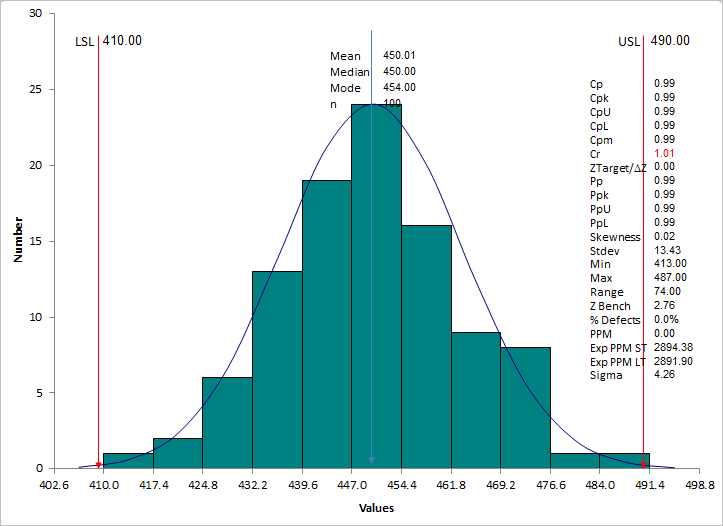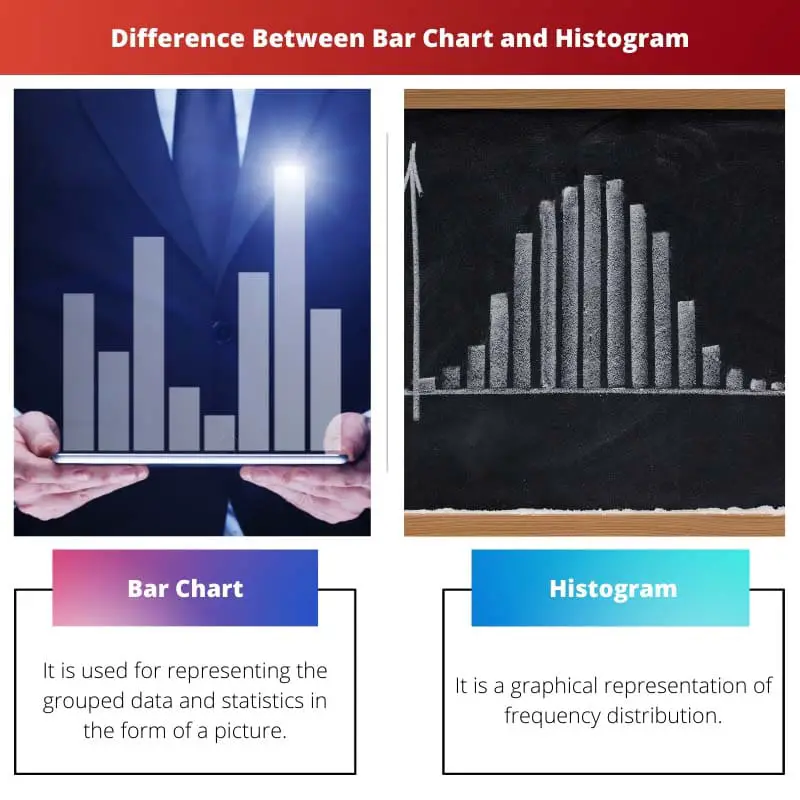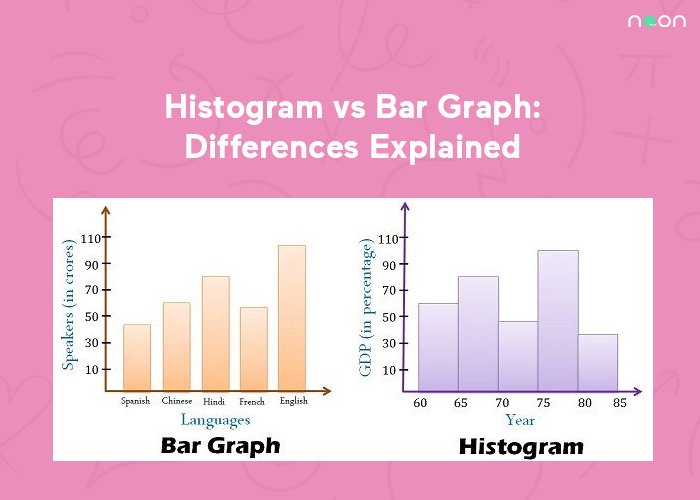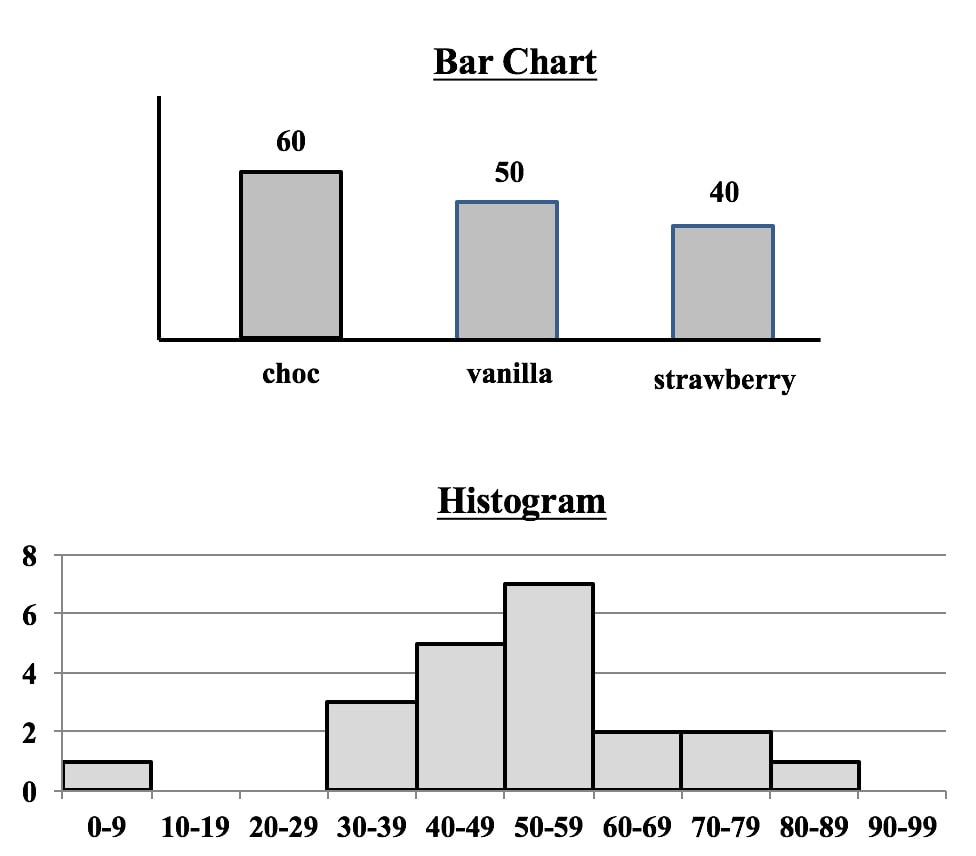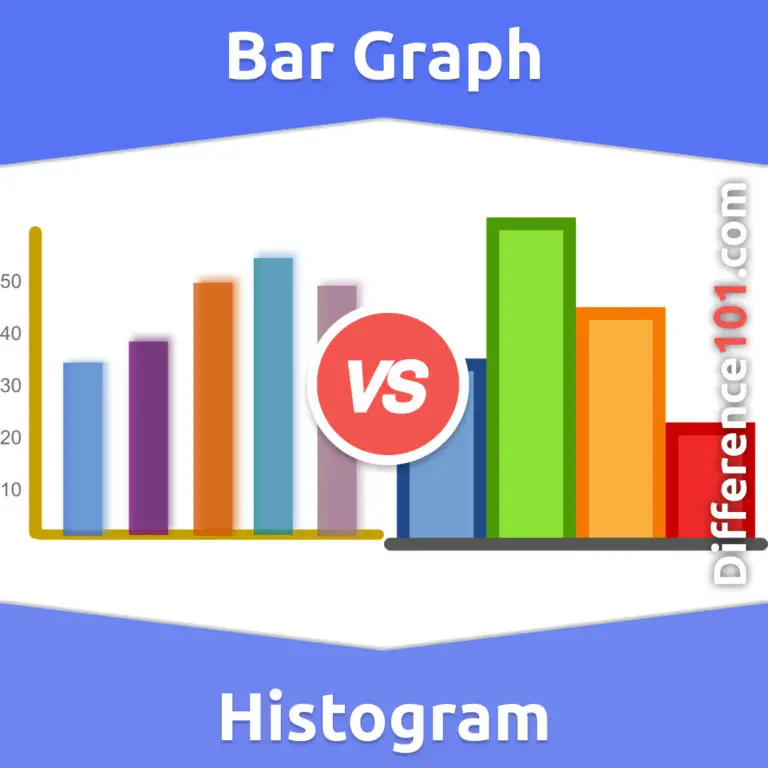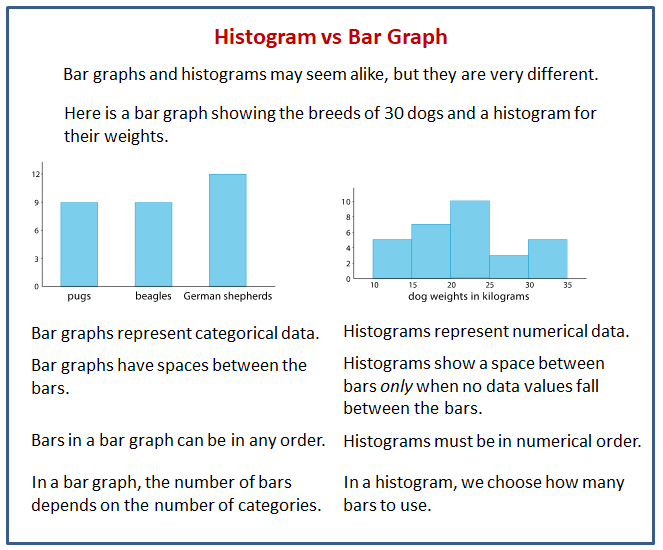Smart Info About When To Use Histogram Vs Bar Chart How Plot A Standard Curve In Excel
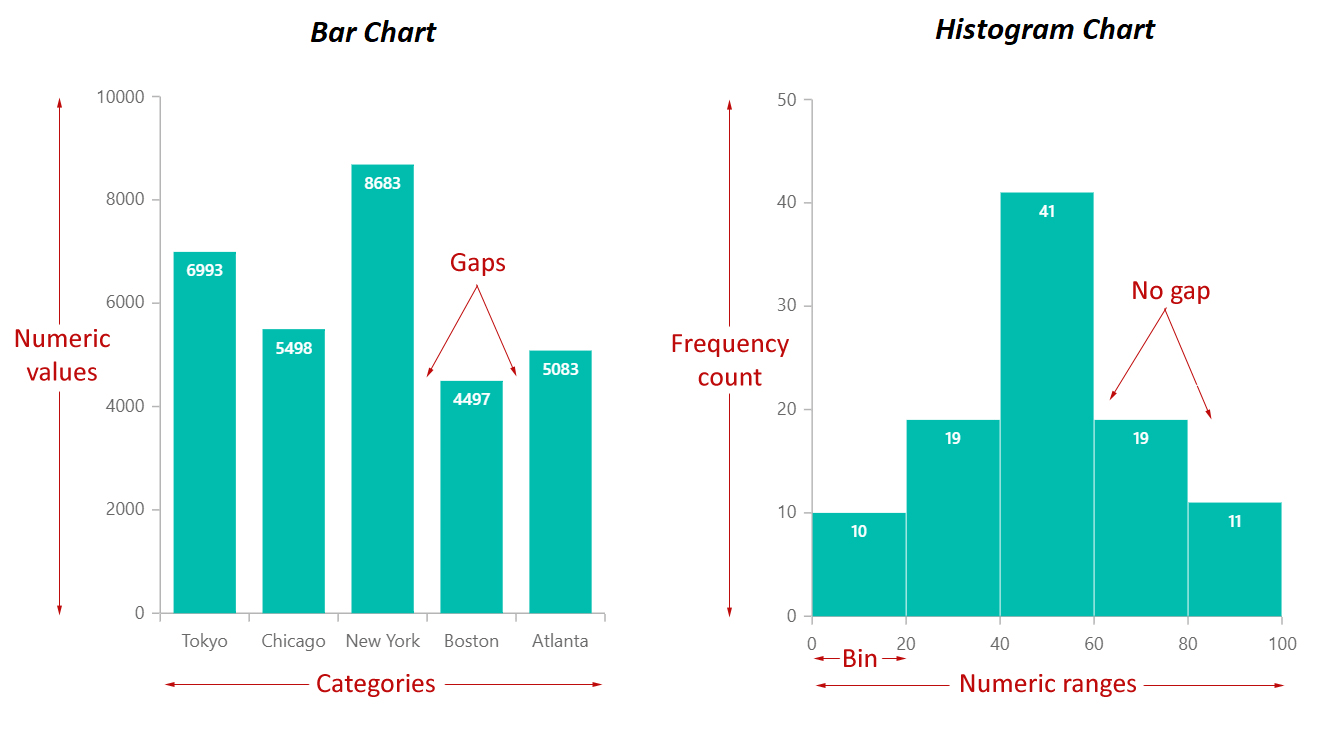
The histogram refers to a graphical representation that shows data by way of bars to display the frequency of numerical data whereas the bar graph is a graphical representation of data that uses bars to compare different categories of data.
When to use histogram vs bar chart. Go to the insert tab, click on the insert statistic chart icon, and select histogram. For continuous data and distribution analysis, use a histogram. Histograms and bar charts can both display large sets of data, but use different types of data points.
When choosing between a histogram and a bar graph, consider the type of data you have and the insights you want to present: A histogram groups continuous data into bins, showing frequency distribution—think of it as capturing the rhythm of your data set, showing the ebb and flow of values. Histograms and bar graphs have different axis representations.
When would you use a bar graph rather than a histogram? What is a bar chart? Two important data visualizations to know are histograms and bar graphs, which look similar but differ in a few key ways.
Sure, both can do the job eventually, but one will do it quickly and efficiently. While they may appear similar initially, both serve different purposes and are best suited for. A bar graph is a pictorial representation of data that uses bars to compare different categories of data.
Histogram bars touch each other, highlighting continuous data. Bar charts and histograms are used for two different purposes. Bar charts are graphical depictions of categorical data.
Generally speaking, continuous data is a value that can be measured, such as temperature, height, or age. In the histogram, the bars are adjacent to each other. This article explores their many differences:
Difference between bar chart and histogram. The other, not so much. Histograms evaluate measures of central tendency (mean, median, mode) and dispersion (variance, standard deviation) within a dataset.
A histogram represents the frequency distribution of continuous variables. This chart thus enables one to view and compare the data at a glance. Histograms display frequency distributions of continuous data sets.
The major difference between bar chart and histogram is the bars of the bar chart are not just next to each other. When delving into the realm of data visualization, understanding the nuances between a bar chart and a histogram, commonly referred to as bar chart vs histogram, is fundamental. Read on to learn the definition and potential uses of each and their associated advantages and disadvantages.
Outliers are anomalous data points which can be easily identified on a histogram, aiding in data cleaning processes and outlier detection. Graphs are a useful way to show numerical data. Histogram and bar graph allow you to visualize the distribution of your data and gain valuable insights into its patterns, trends, and outliers.
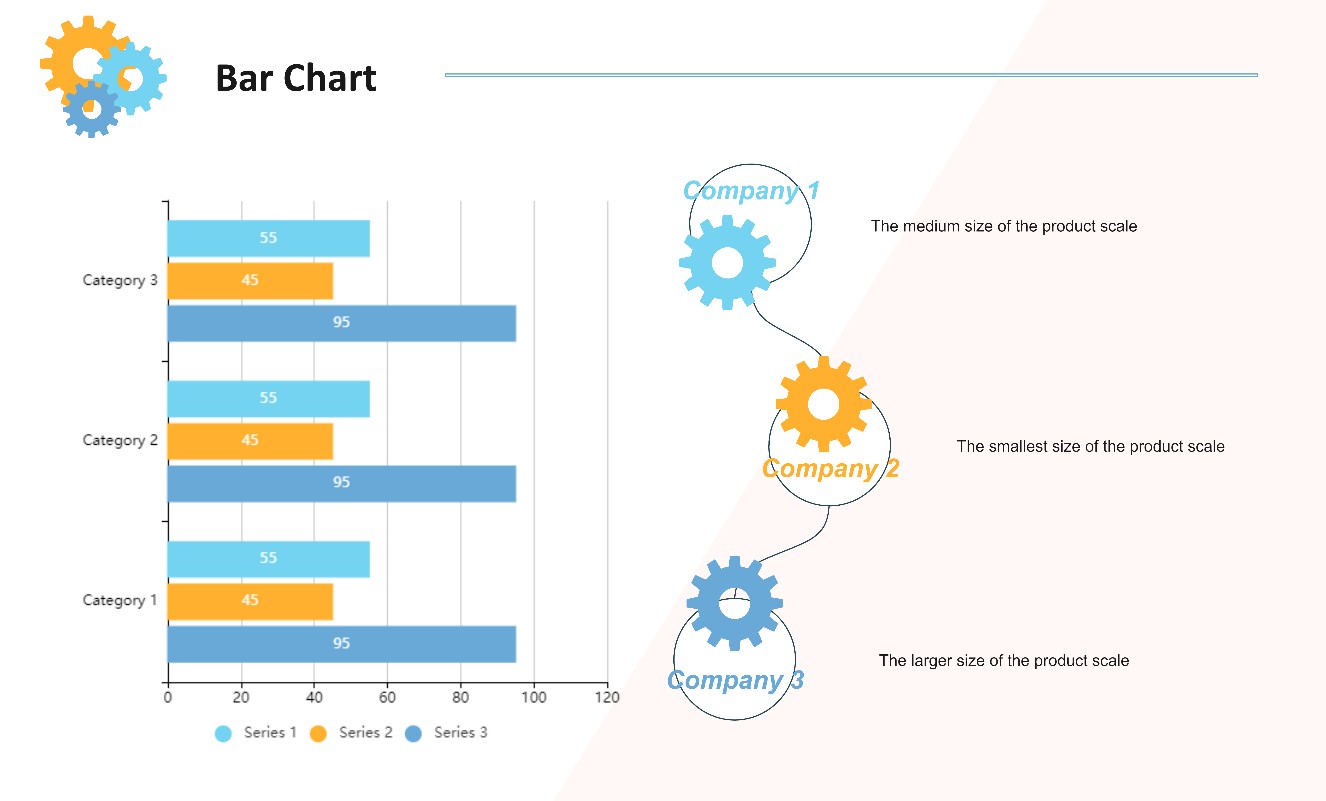


.png)
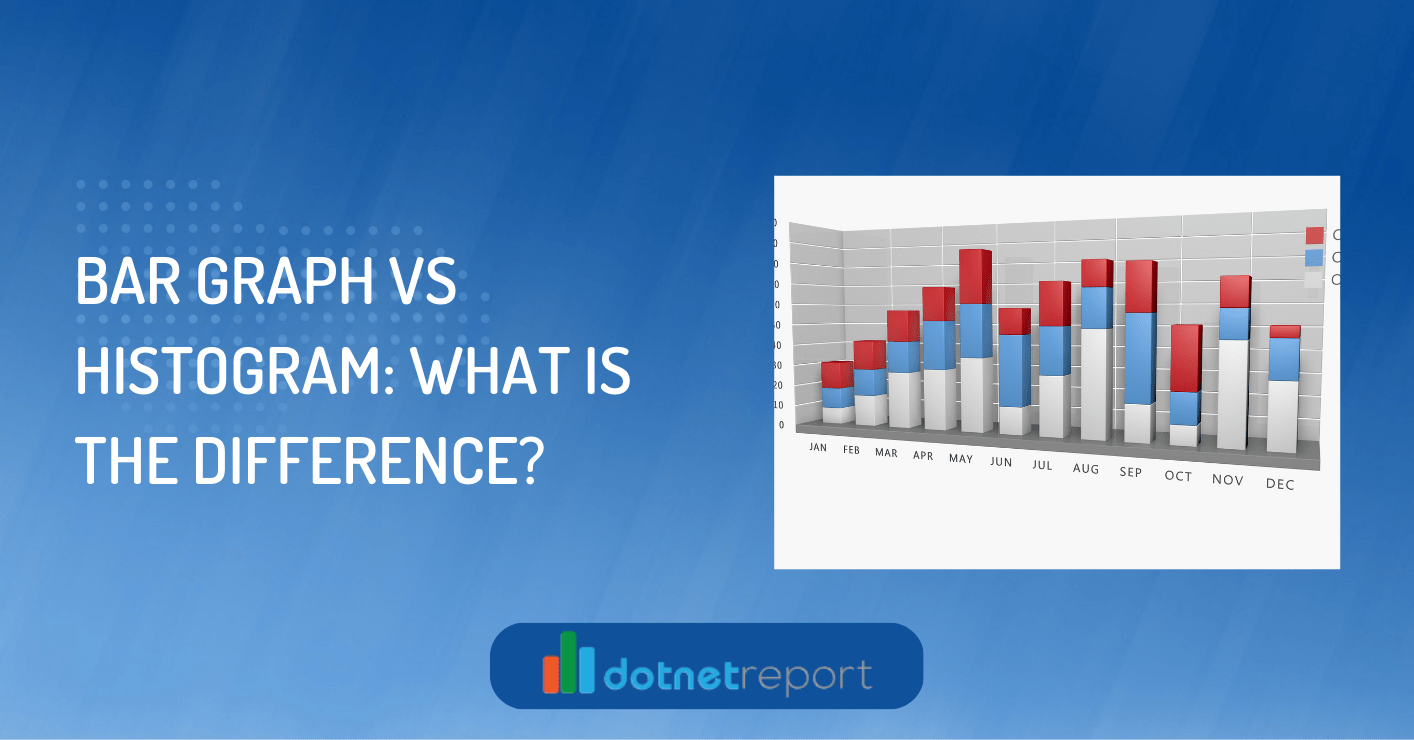

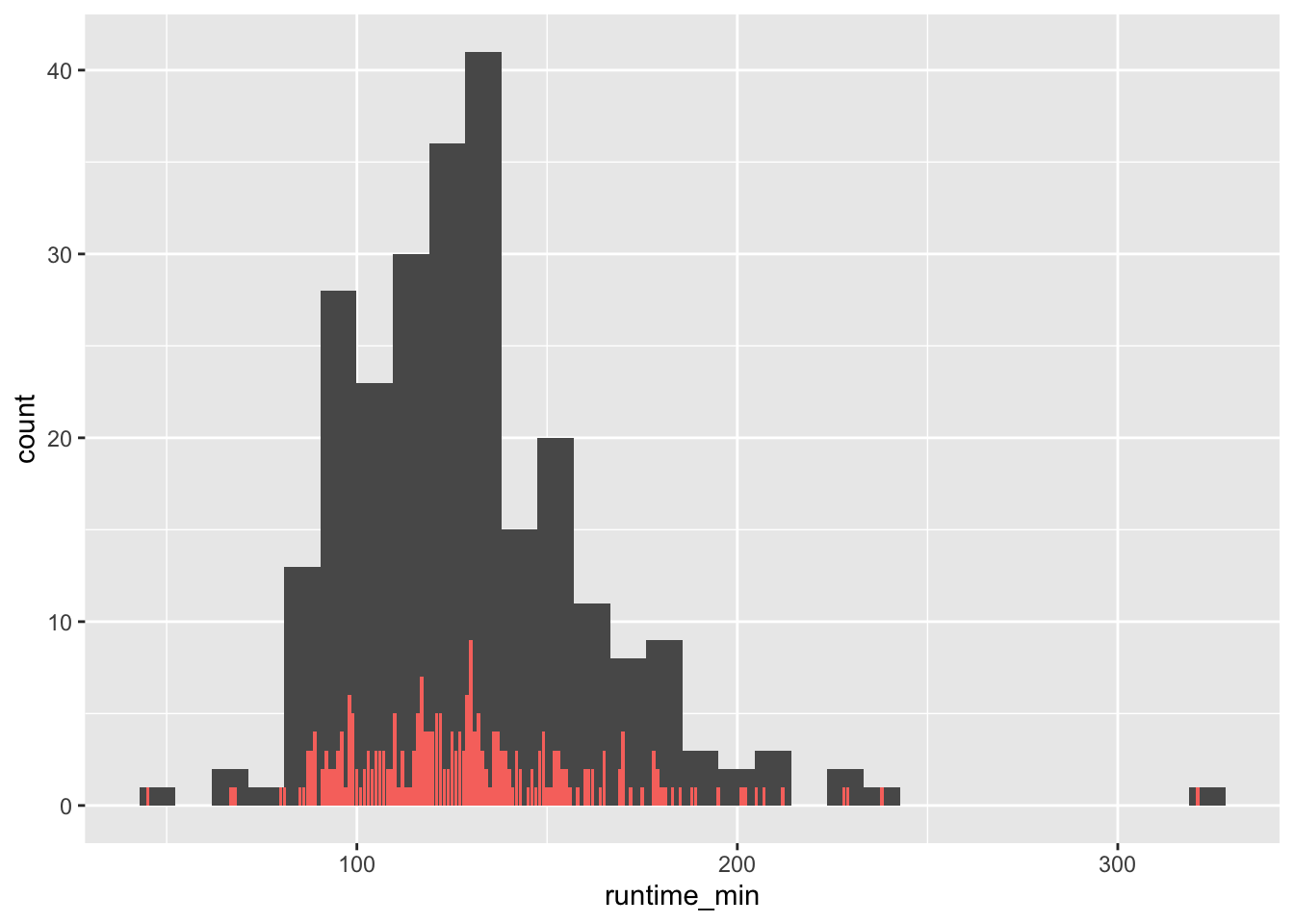
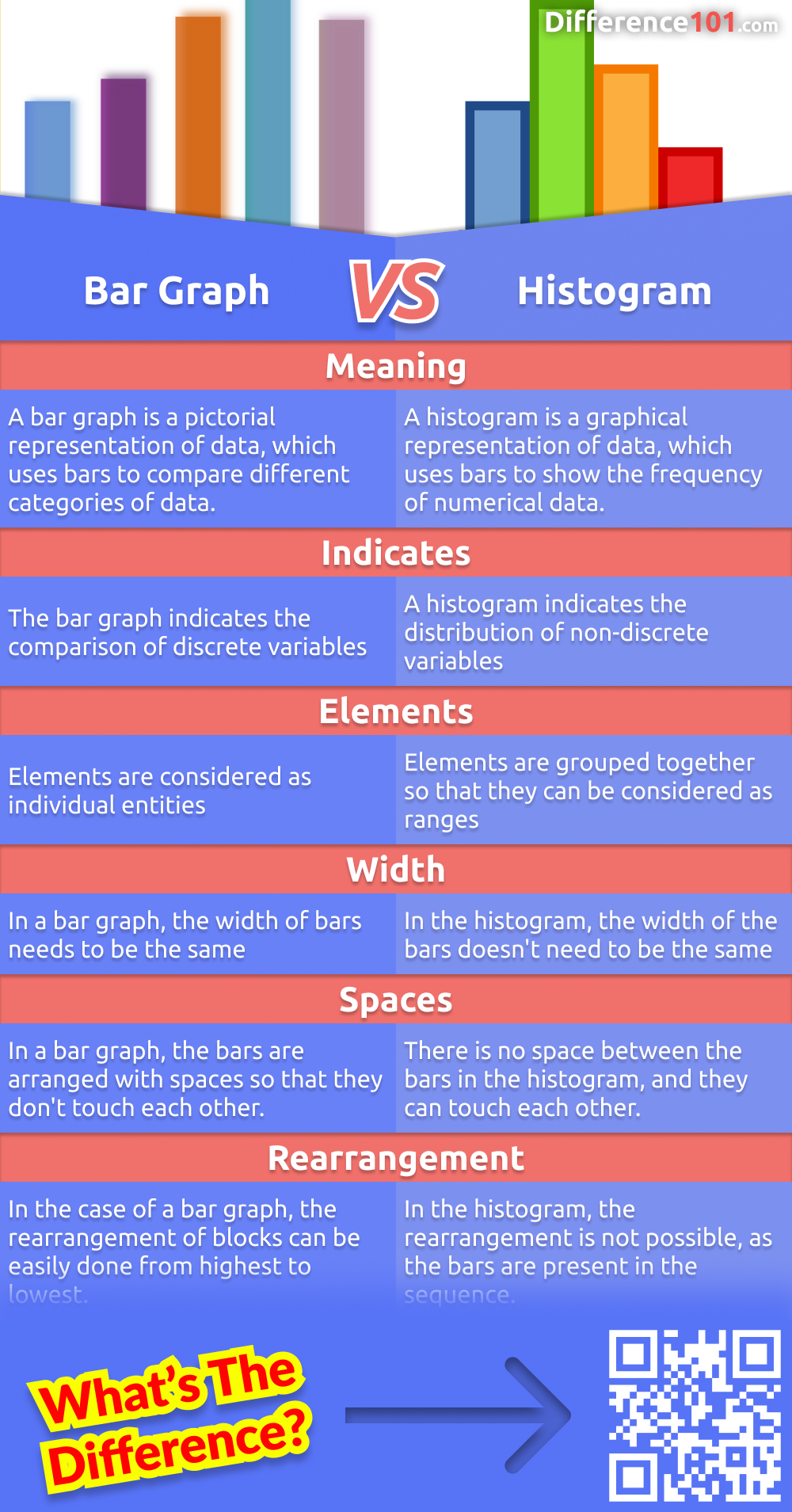

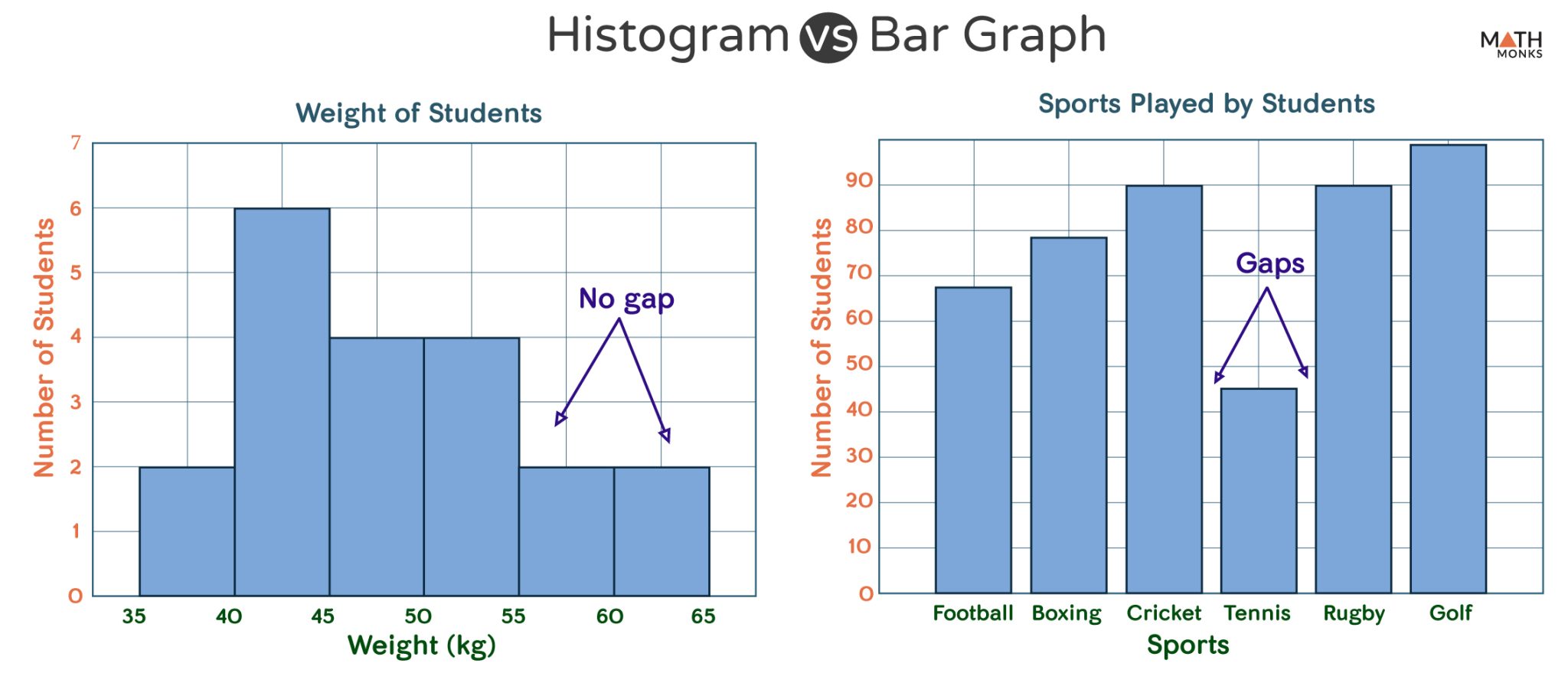
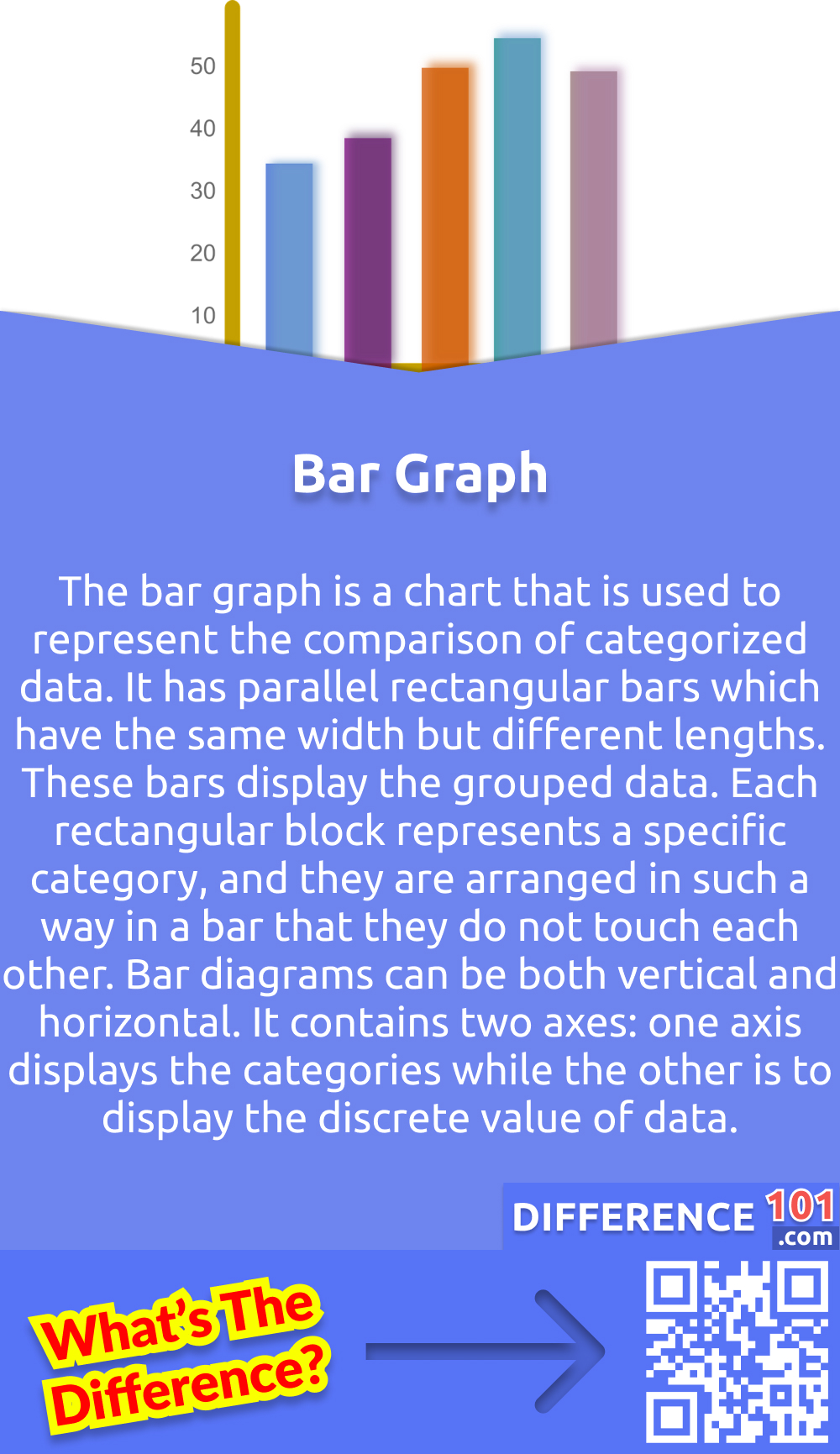
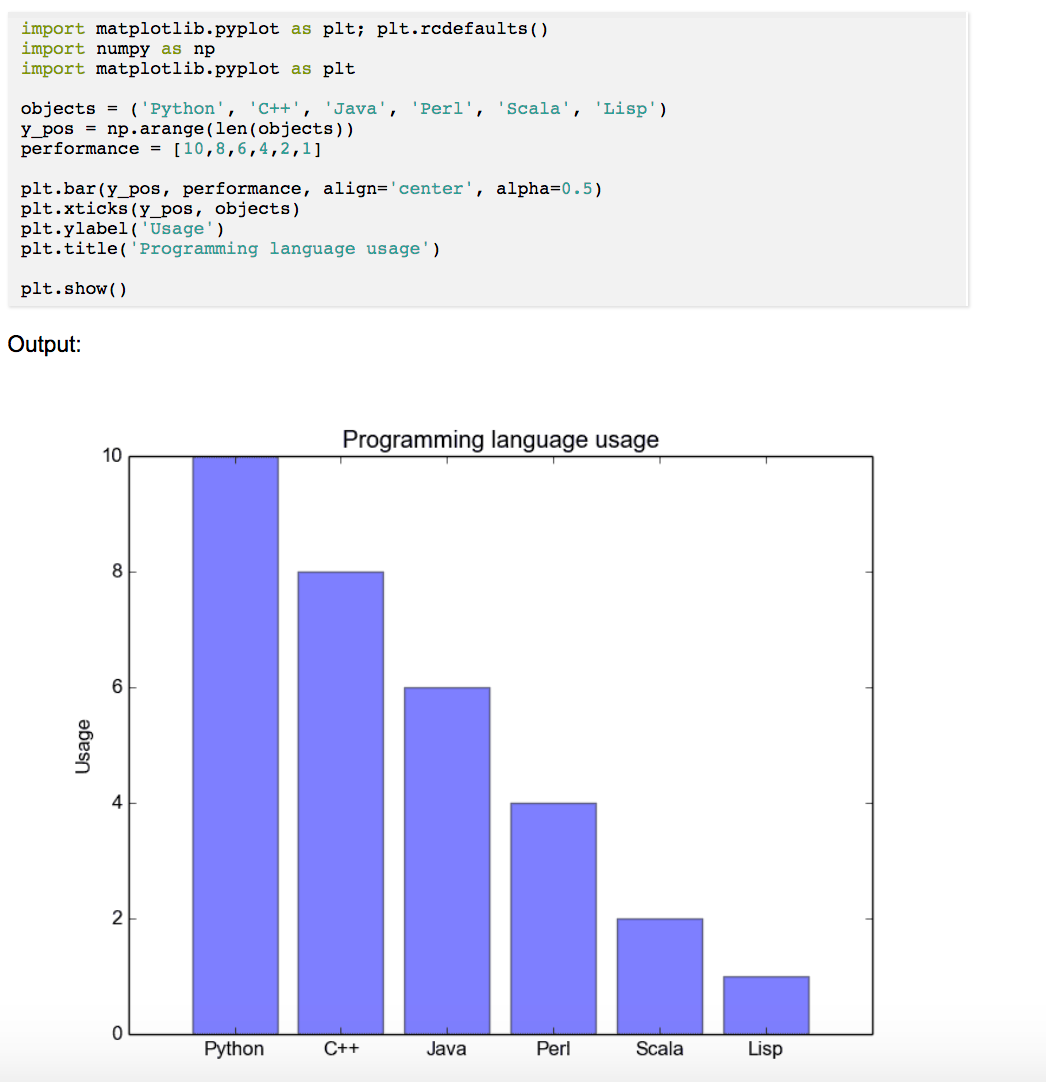
.jpg)
